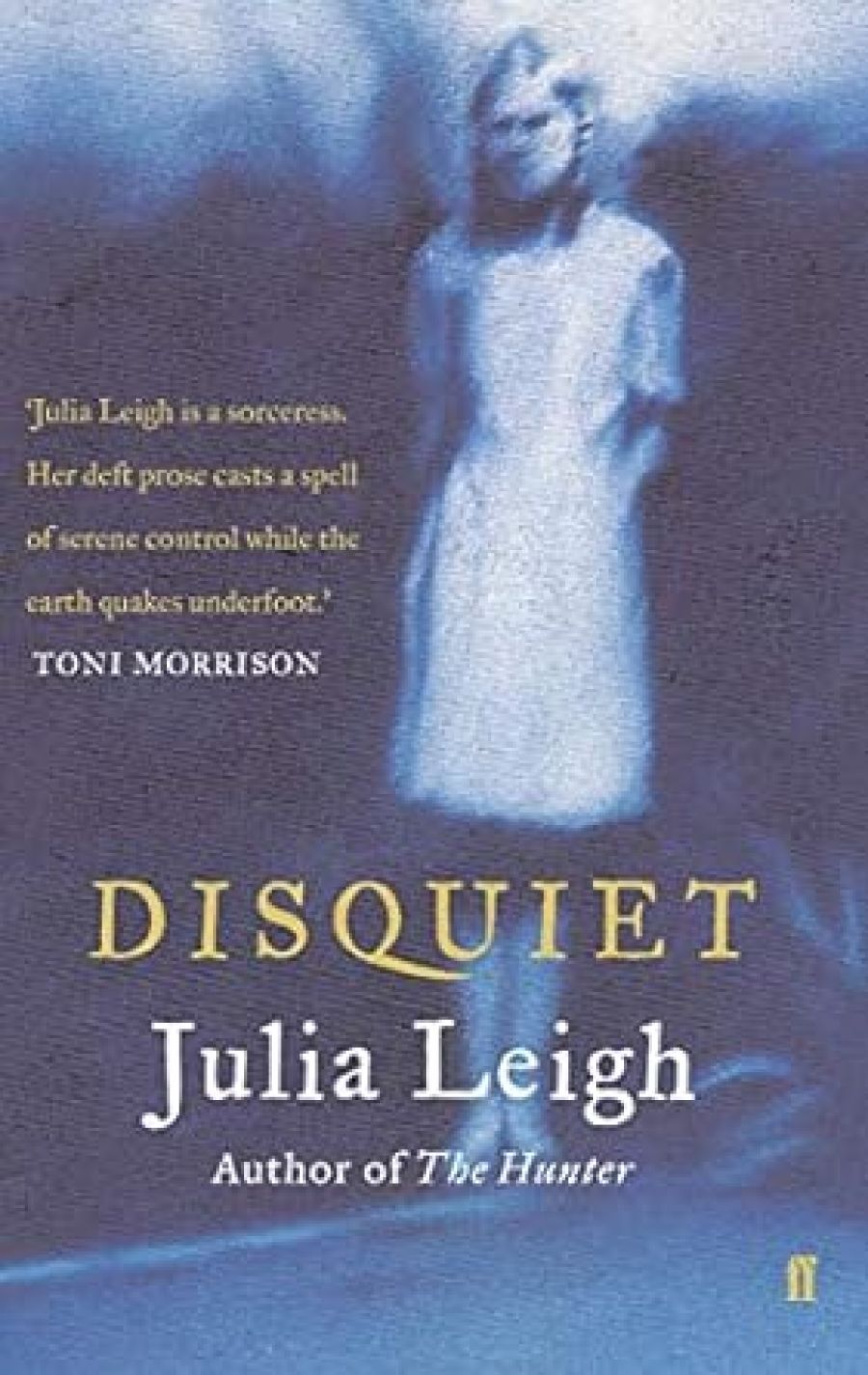
- Free Article: No
- Custom Article Title: Unnerving integrity
- Review Article: Yes
- Article Title: Unnerving integrity
- Online Only: No
- Custom Highlight Text:
Julia Leigh rose to prominence at the end of the 1990s, when Australian literature was experiencing the best and worst of times. Though the 1990s were not the ‘low dishonest decade’ that the post-9/11 allegorical reading of W.H. Auden’s poem ‘September 1, 1939’ implied, this characterisation was apt where Australian literature, or at least its worldwide reception, was concerned. Relentless hype tended to drive out literary factors altogether, even as Australian novels reached audiences they had never before attained. As a young, gifted writer with a sharp, fresh style, Leigh could have easily followed up the success of the The Hunter (1999) by writing a middlebrow-pleasing mega-blockbuster. Instead, she has produced a very short but demanding work that is both compelling and highbrow. Disquiet is an even better book than The Hunter – less formulaic, operating on the level of touch as well as trope, and furiously part of the twenty-first century.
- Book 1 Title: Disquiet
- Book 1 Biblio: Hamish Hamilton, $29.95 hb, 121 pp
- Book 1 Cover Small (400 x 600):

- Book 1 Cover (800 x 1200):

In hewing to the novella, Leigh seems to hark back to high modernism, which, following on from Flaubert (whom Leigh references in the epigraph), favoured the novella as the site where a self-aware, finished style did not have to make any concessions to subject matter. Yet not making any concessions to subject matter is not the same as eschewing it, and Disquiet joins recent works by Andrew McGahan and Richard Flanagan in seeing Australia no longer as the striving entrant to a flourishing metropolitan culture but as itself the site of fear, loss and dispossession. This is a political novel with the politics excised from it, like the wax in a cire-perdue sculpture. But Leigh, like McGahan and Flanagan, sees Australia as no longer a sanctuary from the world’s evils, indeed as a source for refugees rather than a country with the privilege of whether to accept them or not.
Olivia, a mother with two children, who seems to be a refugee from a politically troubled Australia, returns to her French family in the wake of having lost her overseas home. Despite a past rupture, her mother takes in Olivia and her grandchildren.
The situation here is Gothic, indeed reminiscent of nothing so much as V.C. Andrews’s Flowers In the Attic (1977). Returning home is not an escape from disquiet; there is not even the chimerical illusion of domestic reassurance. Yet Leigh surprises the reader by having the primary drama of the book not directly pertain to either Olivia’s immediate or remote past. Disquiet pivots around the birth of a baby girl, Alice, to Olivia’s brother and his wife, and the series of shocking twists that ensue.
If, on the one hand, the one-word conceptual noun title is reminiscent of Ian McEwan’s Atonement (2001), which, like Disquiet, also features a young child guessing at the relationships between adults, it also recalls Greg Egan’s science fiction novels Distress (1997) and Diaspora (1999). Leigh’s sinewy extravagance is the furthest extreme from Egan’s unflappably functional exposition, yet both share a concern with new technology, particularly biotechnology, and how these technologies will function in a world no longer as stable and prosperous as when they first occurred. As with The Hunter, the ability of technology to preserve and alter life is at the core of the plot of Disquiet. A mobile phone plays a crucial role in the plot: a machine as a vehicle of human communication, as portable as the self itself, generates the story’s most suspenseful moment. The border between the conscious and the insensate, of human mystery and biological reproducibility, is traced throughout the novella. As in The Hunter, it is the female body, at its greatest point of vulnerability, that is the object of quest and possessiveness. The suffused density of Leigh’s prose unravels science, history, domesticity in their threats and contradictions. It is as if Leigh has looked at the complacency of the world and shown it a far more disturbing reflection.
Leigh is one of the most riveting writers practising today. When I started the book, I prayed for my dinner appointment to be sufficiently late so I could finish it in one sitting. Leigh has the ability to formulate a complex plot, let the reader know what is going on, make us interested, yet rigorously keep us on the highest literary level. Leigh’s writes with economical opulence; detail and dialogue are her strong points. An almond friand, white-painted stone, a merguez roll; these attested items glisten, evoked with luscious precision. In terms of dialogue, Leigh conveys the speech of both children and adults, both English and French speakers (though the latter are represented in English). The children’s dialogue is particularly striking, funny and idiomatic in just the right way. There are also passages of sheer delight: ‘A ka-ray-zee lay-dee’ calls on the cell phone, the Burmese cat Hello is gratingly praised by Ida: ‘Hellooo. You’re such a good cat, a lovely good cat. Hellloooo. Aren’t you?’
These moments help to create an uncanny background for the disruptively strange events of the novel. From within this deeply felt drama, Leigh lets us glimpse how even the mere muteness of what Giorgio Agamben calls ‘bare life’ might prevail over the various forms of oblivion that imperil it, and how good writing can serve as the surest affirmation of life worth preserving.


Comments powered by CComment